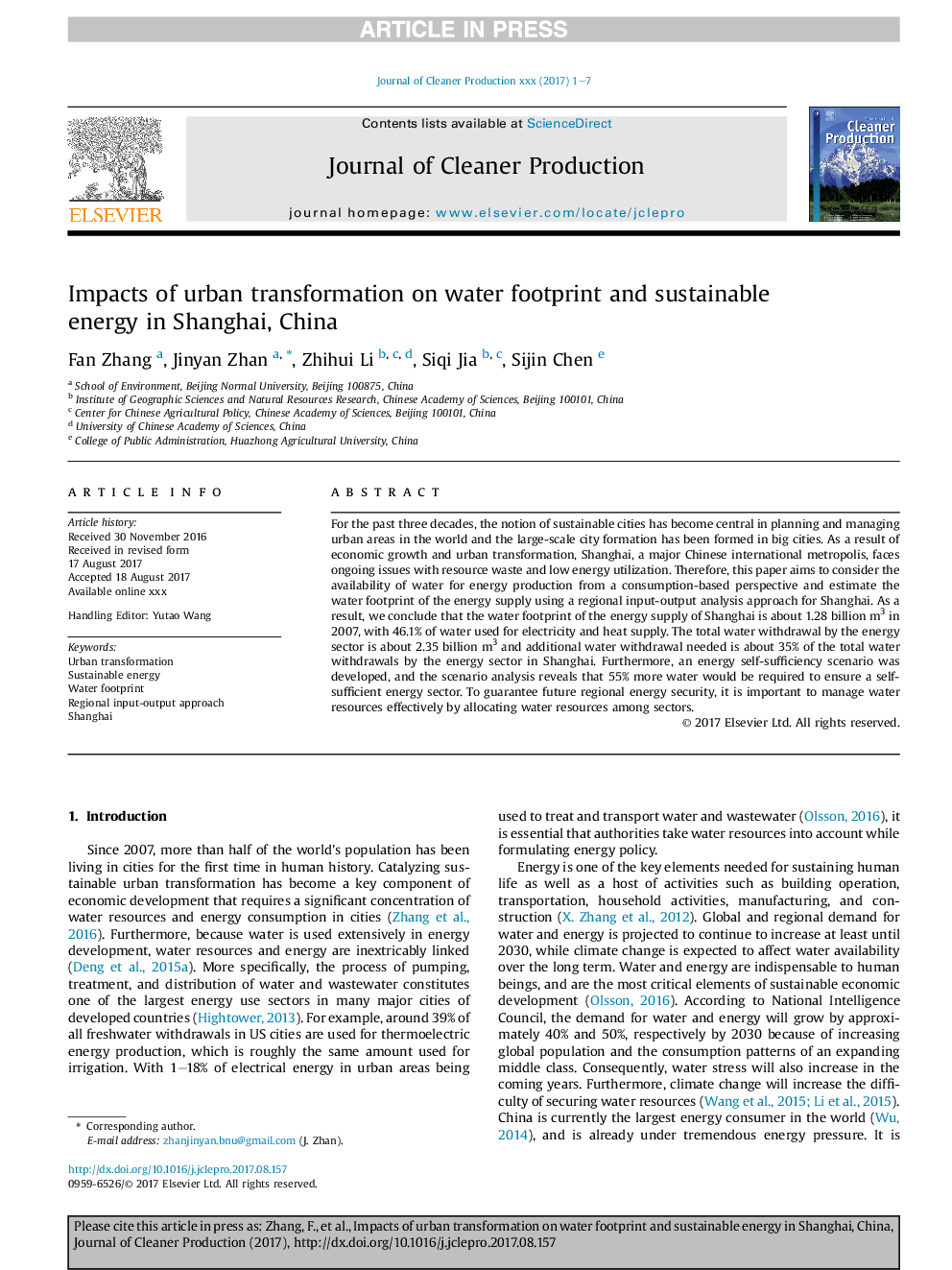| Article ID | Journal | Published Year | Pages | File Type |
|---|---|---|---|---|
| 8095051 | Journal of Cleaner Production | 2018 | 7 Pages |
Abstract
For the past three decades, the notion of sustainable cities has become central in planning and managing urban areas in the world and the large-scale city formation has been formed in big cities. As a result of economic growth and urban transformation, Shanghai, a major Chinese international metropolis, faces ongoing issues with resource waste and low energy utilization. Therefore, this paper aims to consider the availability of water for energy production from a consumption-based perspective and estimate the water footprint of the energy supply using a regional input-output analysis approach for Shanghai. As a result, we conclude that the water footprint of the energy supply of Shanghai is about 1.28 billion m3 in 2007, with 46.1% of water used for electricity and heat supply. The total water withdrawal by the energy sector is about 2.35 billion m3 and additional water withdrawal needed is about 35% of the total water withdrawals by the energy sector in Shanghai. Furthermore, an energy self-sufficiency scenario was developed, and the scenario analysis reveals that 55% more water would be required to ensure a self-sufficient energy sector. To guarantee future regional energy security, it is important to manage water resources effectively by allocating water resources among sectors.
Related Topics
Physical Sciences and Engineering
Energy
Renewable Energy, Sustainability and the Environment
Authors
Fan Zhang, Jinyan Zhan, Zhihui Li, Siqi Jia, Sijin Chen,
